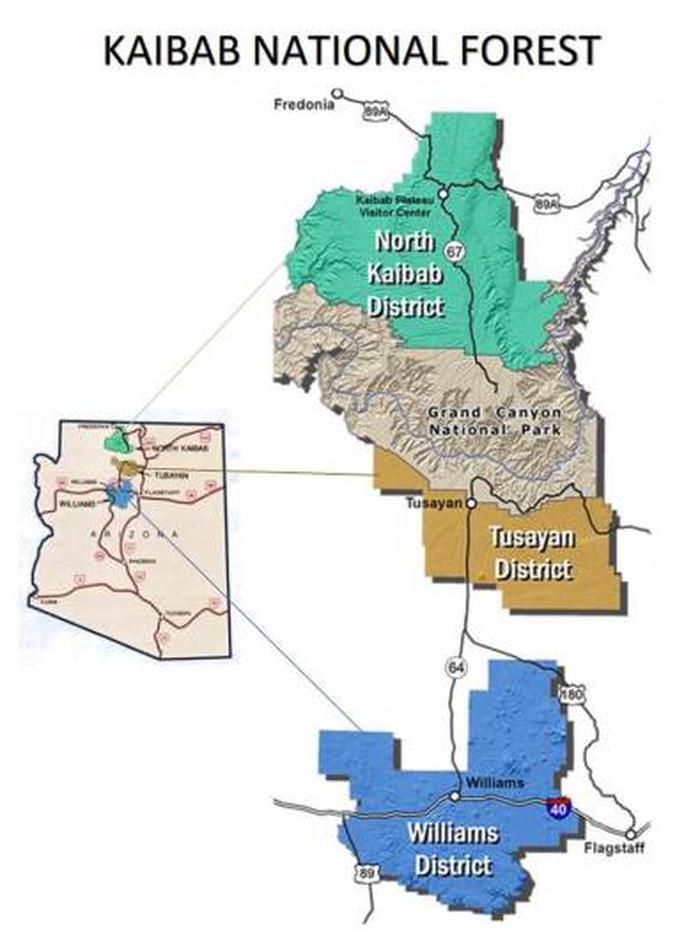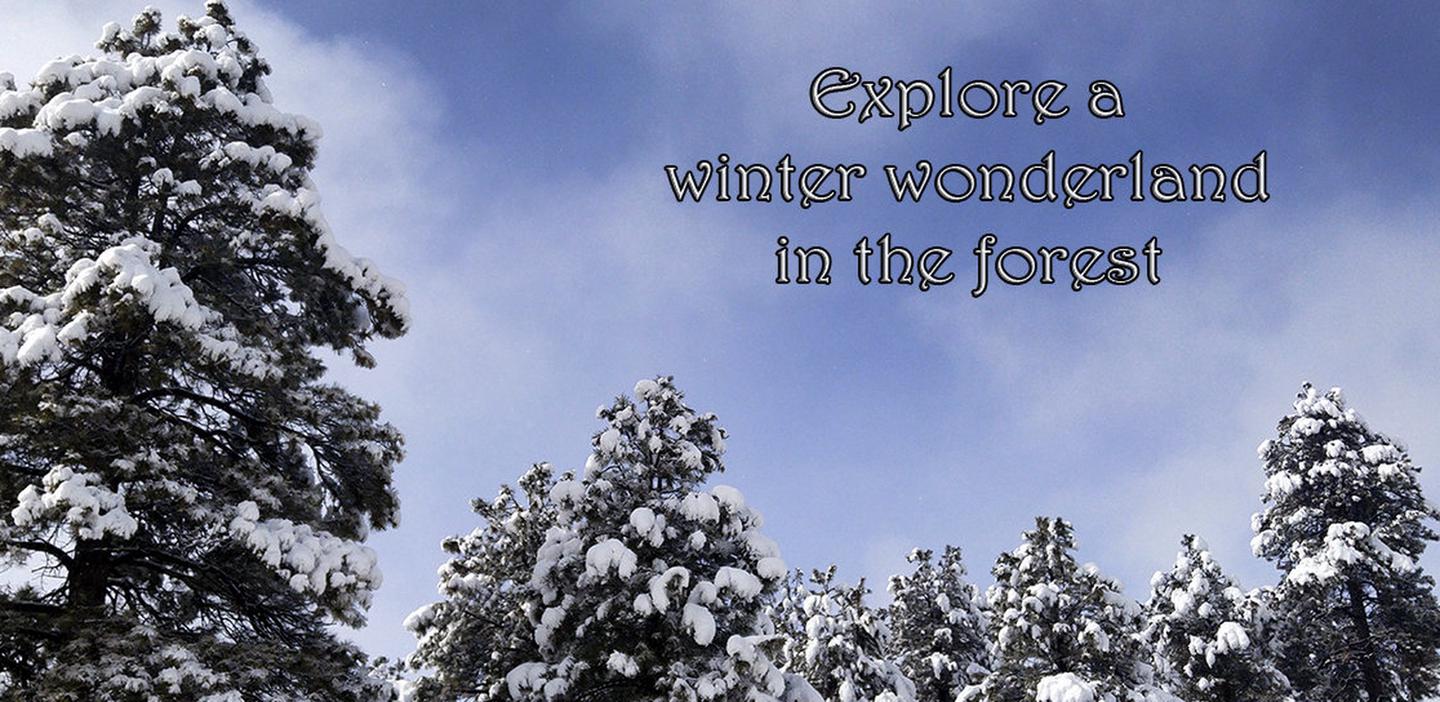Kaibab National Forest Christmas Tree Permit
This permit allows you to cut Christmas Trees within designated areas of the Kaibab National Forest. For the 2024 season, online permits will go on sale starting October 10th at 10:00 AM EASTERN and will be available for the Williams, Tusayan, and North Kaibab Ranger Districts. Maps displaying areas open to cutting on each Ranger District are available for download below.
Additional information is available on the Kaibab National Forest website:
- Christmas Tree Information
- Drive safely and obey all Kaibab National Forest Travel Management rules. Free paper Motor Vehicle Use Maps (MVUM) are available at the district offices or can be downloaded from the Motor Vehicle Use Maps & Motorized Travel Aids website.
Please note: No modifications, cancellations, or refunds can take place once you complete your purchase so make sure you choose the correct permit area (Williams, Tusayan, North Kaibab) at checkout.
Need to Know
Selecting Your Tree
Each forest has limitations on the size of the tree you can cut and the species of trees that are permitted. See below to help you measure and choose a tree that meets your permit's guidelines.
Before you leave home, be sure to measure the space where you plan to place the tree (height and width), and measure the space in your vehicle where you will be transporting the tree.
If there is snow on the ground, remove it from around the stump so you can accurately measure the stump and tree height.
This permit allows the holder to cut a tree of any species that is not more than 10 feet in height.
Select a tree with a trunk six inches or less in diameter, and cut the tree no more than six inches above ground level.
Cut down the entire tree. Do not remove only the top of a tree.
Cut all live tree limbs and branches proturding from stump of the tree. Scatter any slash.
If possible, select a tree from overstocked areas and thickets.
The tree you choose must be at least 200 feet from main roads, recreation sites and campgrounds, and stay away from areas along the sides of streams, rivers, lakes, and wet areas.
Where to Cut Your Tree
The permit is only good for a tree(s) on the specific Ranger District for which it was purchased and can’t be used to cut a tree on a different District or National Forest.
Be sure to download and/or print a copy of the "cutting areas map" that corresponds to the Ranger District on your permit and take it with you when gathering your tree.
Areas designated as "No Cutting" are shown on those included maps for each Ranger District.
Do not cut on private land, in Wilderness areas, or within 200 feet of designated campgrounds and recreation areas.
Do not cut in active timber sales or areas that have been planted with new trees.
For the latest Forest warnings and closures (including road closures) visit: www.fs.usda.gov/alerts/kaibab/alerts-notices
Reach out to our Ranger District Offices if you have any specific questions about where to find or cut your tree.
Planning Your Trip
Helpful Cutting Tips
Tools you might want to consider bringing with you include a measuring tape to ensure you select a tree that fits in your home; handsaw to cut your tree; gloves to protect your hands; boots to protect your feet; a tarp to sit on and/or to move your tree once it's cut; and rope or straps to secure your tree to your vehicle.
Carry your tree carefully out of the woods. Dragging the tree will rub off needles and bark.
If the tree is too big to transport inside of your vehicle, wrap it in canvas to prevent wind damage.
Once home, cut the bottom of the trunk off and place the freshly cut trunk in a bucket of water. Replenish water as needed.
How to Plan Your Trip
For the latest Forest warnings and closures (including road closures) visit: www.fs.usda.gov/alerts/kaibab/alerts-notices
Before leaving home, check weather conditions for the area you plan to cut. Dress warmly and take extra dry clothes. Expect possible winter weather, including cold temperatures, snow and winds. Roads may not be plowed. Carry tire chains, shovel(s) and a tow chain. Be sure your vehicle has a full tank of gas.
Cell service may be spotty or unavailable. Be sure someone knows where you are and when to expect you back.
Bring plenty of food and water with you as well as an overnight survival kit in case you become stranded.
Travel only on open forest roads as cross-country motorized travel is prohibited. Park in areas so that traffic can get by safely, and do not block gates. Avoid wet, muddy areas as they are more susceptible to erosion.
Start your day early. Be sure to find your tree and leave the woods before dark.
If having a campfire, please extiguish it completely before leaving and do not leave it unattended.
Please help keep our forest beautiful by packing out all trash and litter.
Be aware that you are not the only forest user in the woods this time of the year. You may encounter other recreation users, firewood cutters, loggers, and possibly hunters. You may want to consider wearing an article of brightly colored, highly visible clothing while walking in the woods.
Please help protect Condors by ensuring that no garbage, toxic materials, or open fluid containers are accessible and left in the open. If you encounter a Condor while cutting, do not interact with it/them and immediately contact the Ranger Station and report to the District Biologist.
Be aware of areas where trees may be weakened by storms, insect damage or fire.


